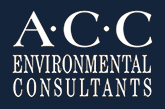Supplemental Guidance for Screening and Evaluating Vapor Intrusion 2020
The Draft Supplemental Guidance introduced this year enhances previous guidance issued by the Department of Toxic Substances Control (DTSC) in 201, and provides additional tools to evaluate a potential vapor intrusion concern (pVIC) in a Phase I Environmental Site Assessments.
What Is Vapor Intrusion?
Vapor intrusion is the migration of chemical vapors from the subsurface into buildings and can pose a risk to human health.
Example Sources of Vapor Former Chemicals (VFC):
Dry Cleaners, Gasoline Stations and other underground storage tank (UST) sites, Auto Repair and Auto Body Facilities, and Industrial Manufacturing.
Important Updates to Guidance:
- Use of the USEPA Attenuation Factor (AF) of 0.03 for screening sites in California. This AF is protective of public health and should be used for initial screening of sites;
- Sampling sewer air for evidence of potential preferential pathway for vapor migration;
- Four-step evaluation process for determining vapor intrusion risk from on-site or off-site sources; and
- CA-specific vapor intrusion database to support development of CA-specific attenuation factors
ACC can help identify potential sources of VFC contamination through sampling soil, groundwater, and soil vapor. ACC additionally conducts indoor air sampling to confirm whether contamination in the subsurface may be migrating into buildings.
ACC has extensive experience with site investigations and assessing vapor intrusion concerns. When warranted, ACC can assist in the development of vapor mitigation systems for new construction where vapor intrusion is a concern.
Additional Information on Vapor Intrusion can be found here:

